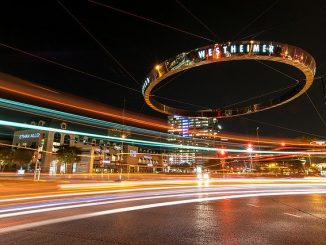
As critiques go, this is as tepid as they come, but it’s undoubtedly all the Chron editors will allow, and it will be held up as an example of the Chron’s tenacious, watchdog reporting:
The Metropolitan Transit Authority touted numbers from a state-mandated audit last month showing that ridership increased 3 percent over the past four years.
The agency also touted increased revenue — partly because of fare hikes — and at least $150 million in light-rail expansion funding that the federal government has indicated it plans to funnel to Metro.
But a closer look at all the good news shows that ridership is slightly below where it was in 2000, despite a 17 percent increase in Harris County’s population. Bus ridership — Metro’s core service — has dropped more than 14 percent.
The new audit has prompted a debate over Metro’s performance. But how critics grade the agency also hinges on what they think its fundamental mission should be. Should you count the number of riders? Number of buses? Cost to the taxpayer? Whether buses are on time? Crowded? Comfortable? Energy efficient?
The critics’ concerns (and facts) are flattened by the non-critics’ explanations. You’ll be so surprised to see where Carolyn Feibel turned for soothing reassurances:
Members of the Citizens’ Transportation Coalition also counsel patience during construction. “A dollar you spend on new facilities is a dollar you don’t spend on operations, and vice-versa,” said CTC board member Christof Spieler. Another difficulty is maximizing ridership while also using tax dollars wisely, he added.
Robin Holzer, the coalition’s chair, pointed out that simply counting riders does not take into account the quality of the trip.
The light rail is quieter, more comfortable, and more reliable than a regular bus. “It’s got level boarding, which is great if you are in a wheelchair or have a baby stroller,” she said.
Apparently, that is the new measure of worthiness to spend billions of taxpayer dollars: level boarding. Never mind that a tiny fraction of the greater Houston-area population will ever use it, or that the train will increase congestion by taking away traffic lanes. Reducing traffic congestion was one of the initial selling features of light rail. Now level boarding is a talking point.
As Metro adds more light rail lines, riders will flock to it, Holzer predicted. Metro officials project 160,000 daily trips by 2030.
Yes, well, the predictions METRO makes for public consumption are often wildly different from actual projections on government documents.
And then there’s this:
Since 2006, more than 11 million people have ridden the Main Street “Red” Line every year.
I’m guessing that stat refers to boardings, but METRO has a tendency to run fast and loose with stats and wording, as Rad Sallee explained three years ago:
The measure that Metro watches most closely — the key indicator of how well it is performing its mission — is often referred to as “ridership.” But this turns out to be a slippery concept. As with the elephant and the blind men, you need to examine it several ways for a complete picture.
Slippery is the perfect word to describe METRO. But just for fun, let’s run with the “11 million riders” data point for a moment. Back in 2006, METRO told the Ottawa Sun that 12 million passengers were riding the light rail line every year. Now it’s down to 11 million. Hmmmm. That would seem to be a declining trend.
BLOGVERSATION: TBIFOC.


